320
292 chapter 6 Reporting and Analyzing Inventory
study objective 3
Explain the financial statement and tax effects of each of the inventory cost flow assumptions.
19%  Average-
Average-
Cost
4% Other
FINANCIAL STATEMENT AND TAX EFFECTS OF COST FLOW METHODS
Each of the three assumed cost flow methods is acceptable for use under GAAP. For example, Reebok International Ltd. and Wendy’s International currently use the FIFO method of inventory costing. Campbell Soup Company, Krogers, and Walgreens use LIFO for part or all of their inventory. Bristol-Myers Squibb, Starbucks, and Motorola use the average-cost method. In fact, a company may also use more than one cost flow method at the same time. Stanley Black & Decker Manufacturing Company, for example, uses LIFO for domestic inventories and FIFO for foreign inventories. Illustration 6-11 shows the use of the three cost flow methods in the 600 largest U.S. companies.
The reasons companies adopt different inventory cost flow methods are varied, but they usually involve at least one of the following three factors:
1.Income statement effects
2.Balance sheet effects
3.Tax effects
Income Statement Effects
Illustration 6-11 Use of cost flow methods in major U.S. companies
To understand why companies might choose a particular cost flow method, let’s examine the effects of the different cost flow assumptions on the financial statements of Houston Electronics. The condensed income statements in Illustration 6-12 assume that Houston sold its 550 units for $18,500, had operating expenses of $9,000, and is subject to an income tax rate of 30%.
Illustration 6-12 |
HOUSTON ELECTRONICS |
|
|
|
|
|
Comparative effects of |
|
|
|
|
|
cost flow methods |
Condensed Income Statements |
|
|
|
|
|
|
|
|
|
|
|
|
|
|
|
|
|
|
|
|
FIFO |
|
LIFO |
|
Average-Cost |
|
|
|
|
|
|
|
|
|
|
|
|
|
Sales revenue |
$18,500 |
$18,500 |
$18,500 |
|
|
|
|
|
|
|
|
|
|
|
|
|
|
Beginning inventory |
|
1,000 |
|
1,000 |
1,000 |
|
|
Purchases |
|
11,000 |
|
11,000 |
11,000 |
|
|
|
|
|
|
|
|
|
|
|
|
|
|
Cost of goods available for sale |
|
12,000 |
|
12,000 |
12,000 |
|
|
Less: Ending inventory |
|
5,800 |
|
5,000 |
5,400 |
|
|
|
|
|
|
|
|
|
|
|
|
|
|
Cost of goods sold |
|
6,200 |
|
7,000 |
6,600 |
|
|
|
|
|
|
|
|
|
|
|
|
|
|
Gross profit |
|
12,300 |
|
11,500 |
11,900 |
|
|
Operating expenses |
|
9,000 |
|
9,000 |
9,000 |
|
|
|
|
|
|
|
|
|
|
|
|
|
|
Income before income taxes |
|
3,300 |
|
2,500 |
2,900 |
|
|
Income tax expense (30%) |
|
990 |
750 |
870 |
|
|
|
|
|
|
|
|
|
|
|
|
|
|
Net income |
$ 2,310 |
$ 1,750 |
$ 2,030 |
|
|
|
|
|
|
|
|
|
|
|
|
|
Note the cost of goods available for sale ($12,000) is the same under each of the three inventory cost flow methods. However, the ending inventories and the costs of goods sold are different. This difference is due to the unit costs that the company allocated to cost of goods sold and to ending inventory. Each dollar of difference in ending inventory results in a corresponding dollar difference in income before income taxes. For Houston, an $800 difference exists between
FIFO and LIFO cost of goods sold.
In periods of changing prices, the cost flow assumption can have a significant impact on income and on evaluations based on income. In most instances, prices are rising (inflation). In a period of inflation, FIFO produces a higher net

321
Inventory Costing 293
income because the lower unit costs of the first units purchased are matched against revenues. In a period of rising prices (as is the case in the Houston example), FIFO reports the highest net income ($2,310) and LIFO the lowest ($1,750); average-cost falls in the middle ($2,030). If prices are falling, the results from the use of FIFO and LIFO are reversed: FIFO will report the lowest net income and LIFO the highest.
To management, higher net income is an advantage: It causes external users to view the company more favorably. In addition, management bonuses, if based on net income, will be higher. Therefore, when prices are rising (which is usually the case), companies tend to prefer FIFO because it results in higher net income.
Some argue that the use of LIFO in a period of inflation reduces the likelihood that the company will report paper (or phantom) profit as economic gain. To illustrate, assume that Kralik Company buys 200 units of a product at $20 per unit on January 10 and 200 more on December 31 at $24 each. During the year, Kralik sells 200 units at $30 each. Illustration 6-13 shows the results under FIFO and LIFO.
|
|
|
FIFO |
|
|
|
|
LIFO |
|
Illustration 6-13 Income |
|
|
|
|
|
|
statement effects compared |
Sales revenue (200 $30) |
$6,000 |
|
|
$6,000 |
|
|
|
|
|
|
|
Cost of goods sold |
|
4,000 |
(200 $20) |
|
4,800 |
(200 $24) |
|
|
|
|
|
|
|
|
|
|
|
Gross profit |
$2,000 |
|
|
$1,200 |
|
|
|
|
|
|
|
|
|
|
|
|
|
|
Under LIFO, Kralik Company has recovered the current replacement cost ($4,800) of the units sold. Thus, the gross profit in economic terms is real. However, under FIFO, the company has recovered only the January 10 cost ($4,000). To replace the units sold, it must reinvest $800 (200 $4) of the gross profit. Thus, $800 of the gross profit is said to be phantom or illusory. As a result, reported net income is also overstated in real terms.
Balance Sheet Effects
A major advantage of the FIFO method is that in a period of inflation, the costs allocated to ending inventory will approximate their current cost. For example, for Houston Electronics, 400 of the 450 units in the ending inventory are costed under FIFO at the higher November 27 unit cost of $13.
Conversely, a major shortcoming of the LIFO method is that in a period of inflation, the costs allocated to ending inventory may be significantly understated in terms of current cost. The understatement becomes greater over prolonged periods of inflation if the inventory includes goods purchased in one or more prior accounting periods. For example, Caterpillar has used LIFO for 50 years. Its balance sheet shows ending inventory of $4,675 million. But, the inventory’s actual current cost if FIFO had been used is $6,799 million.
Tax Effects
We have seen that both inventory on the balance sheet and net income on the income statement are higher when companies use FIFO in a period of inflation. Yet, many companies use LIFO. Why? The reason is that LIFO results in the lowest income taxes (because of lower net income) during times of rising prices. For example, in Illustration 6-12, income taxes are $750 under LIFO, compared to $990 under FIFO. The tax savings of $240 makes more cash available for use in the business.
Helpful Hint A tax rule, often referred to as the LIFO conformity rule, requires that if companies use LIFO for tax purposes, they must also use it for financial reporting purposes. This means that if a company chooses the LIFO method to reduce its tax bills, it will also have to report lower net income in its financial statements.
322
294 chapter 6 Reporting and Analyzing Inventory
International Insight
Is LIFO Fair?
ExxonMobil Corporation, like many U.S. companies, uses LIFO to value its inventory for financial reporting and tax purposes. In one recent year, this resulted in a cost of goods sold figure that was $5.6 billion higher than under FIFO. By increasing cost of goods sold, ExxonMobil reduces net income, which reduces taxes. Critics say that LIFO provides an unfair “tax dodge.” As Congress looks for more sources of tax revenue, some lawmakers favor the elimination of LIFO. Supporters of LIFO argue that the method is conceptually sound because it matches current costs with current revenues. In addition, they point out that this matching provides protection against inflation.
International accounting standards do not allow the use of LIFO. Because of this, the net income of foreign oil companies, such as BP and Royal Dutch Shell, are not directly comparable to U.S. companies, which makes analysis difficult.
Source: David Reilly, “Big Oil’s Accounting Methods Fuel Criticism,” Wall Street Journal (August 8, 2006), p. C1.
? What are the arguments for and against the use of LIFO? (See page 330.)
You have just seen that when prices are rising the use of LIFO can have a big effect on taxes. The lower taxes paid using LIFO can significantly increase cash flows. To demonstrate the effect of the cost flow assumptions on cash flow, we will calculate net cash provided by operating activities, using the data for Houston Electronics from Illustration 6-12. To simplify our example, we assume that Houston’s sales and purchases are all cash transactions. We also assume that operating expenses, other than $4,600 of depreciation, are cash transactions.
|
|
FIFO |
|
LIFO |
Average-Cost |
Cash received from customers |
$18,500 |
|
$18,500 |
$18,500 |
|
Cash purchases of goods |
11,000 |
|
11,000 |
|
|
11,000 |
|
Cash paid for operating expenses |
|
|
|
|
|
|
|
|
|
|
|
($9,000 $4,600) |
4,400 |
|
4,400 |
|
|
4,400 |
|
Cash paid for taxes |
990 |
|
750 |
|
|
870 |
|
|
|
|
|
|
|
|
|
Net cash provided by operating activities |
$ 2,110 |
$ 2,350 |
$ |
2,230 |
|
|
|
|
|
|
|
|
|
|
|
|
|
|
|
|
|
|
|
|
|
|
|
|
|
LIFO has the highest net cash provided by operating activities because it results in the lowest tax payments. Since cash flow is the lifeblood of any organization, the choice of inventory method is very important.
LIFO also impacts the quality of earnings ratio. Recall that the quality of earnings ratio is net cash provided by operating activities divided by net income. Here, we calculate the quality earnings ratio under each cost flow assumption.
|
|
FIFO |
|
LIFO |
Average-Cost |
Net income (from Illustration 6-12) |
$2,310 |
$1,750 |
|
$2,030 |
|
Quality of earnings ratio |
0.91 |
1.34 |
1.1 |
|
|
|
|
|
|
|
|
|
|
LIFO has the highest quality of earnings ratio for two reasons: (1) It has the highest net cash provided by operating activities, which increases the ratio’s numerator. (2) It reports a conservative measure of net income, which decreases the ratio’s denominator. As discussed earlier, LIFO provides a conservative measure of net income because it does not include the phantom profits reported under FIFO.
Do it!
324
296 chapter 6 Reporting and Analyzing Inventory
Illustration 6-15
Computation of inventory at lower-of-cost-or-market
purchasing the same goods at the present time from the usual suppliers in the usual quantities. Current replacement cost is used because a decline in the replacement cost of an item usually leads to a decline in the selling price of the item.
To illustrate the application of LCM, assume that Ken Tuckie TV has the following lines of merchandise with costs and market values as indicated. LCM produces the results shown in Illustration 6-15. Note that the amounts shown in the final column are the lower-of-cost-or-market amounts for each item.
|
|
|
|
|
|
|
|
Lower-of- |
|
|
Cost |
|
Market |
Cost-or-Market |
|
|
|
|
|
|
|
|
|
|
|
Flat-panel TVs |
$60,000 |
$55,000 |
|
$ |
55,000 |
|
Satellite radios |
45,000 |
52,000 |
|
|
|
|
45,000 |
|
DVD recorders |
48,000 |
45,000 |
|
|
|
|
45,000 |
|
DVDs |
15,000 |
14,000 |
|
|
|
|
14,000 |
|
|
|
|
|
|
|
|
|
|
|
|
Total inventory |
|
|
|
|
|
|
$159,000 |
|
|
|
|
|
|
|
|
|
|
|
|
|
|
|
|
|
|
|
|
|
|
|
|
|
|
|
|
Adherence to LCM is important. A Chinese manufacturer of silicon wafers for solar energy panels, LDK Solar Co., was accused of violating LCM. When the financial press reported accusations that two-thirds of its inventory of silicon was unsuitable for processing, the company’s stock price fell by 40%.
before you go on...
LCM BASIS
Action Plan
•Determine whether cost or market value is lower for each inventory type.
•Sum the lower value of each inventory type to determine the total value of inventory.
 Tracy Company sells three different types of home heating stoves (wood, gas, and pellet). The cost and market value of its inventory of stoves are as follows.
Tracy Company sells three different types of home heating stoves (wood, gas, and pellet). The cost and market value of its inventory of stoves are as follows.
|
Cost |
Market |
Gas |
$ 84,000 |
$ 79,000 |
Wood |
250,000 |
280,000 |
Pellet |
112,000 |
101,000 |
Determine the value of the company’s inventory under the lower-of-cost-or-market approach.
Solution
The lower value for each inventory type is: gas $79,000, wood $250,000, and pellet $101,000. The total inventory value is the sum of these figures, $430,000.
Related exercise material: BE6-7, Do it! 6-3, and E6-9.
study objective 5
Compute and interpret the inventory turnover ratio.
Analysis of Inventory
For companies that sell goods, managing inventory levels can be one of the most critical tasks. Having too much inventory on hand costs the company money in storage costs, interest cost (on funds tied up in inventory), and costs associated with the obsolescence of technical goods (e.g., computer chips) or shifts in fashion (e.g., clothes). But having too little inventory on hand results in lost sales. In this section, we discuss some issues related to evaluating inventory levels.
INVENTORY TURNOVER RATIO
The inventory turnover ratio is calculated as cost of goods sold divided by average inventory. It indicates how quickly a company sells its goods—the number of times the average inventory “turns over” (is sold) during the year.
325
Analysis of Inventory 297
Inventory turnover can be divided into 365 days to compute days in inventory, which indicates the average number of days inventory is held.
High inventory turnover (low days in inventory) indicates the company has minimal funds tied up in inventory—that it has a minimal amount of inventory on hand at any one time. Although minimizing the funds tied up in inventory is efficient, too high an inventory turnover ratio may indicate that the company is losing sales opportunities because of inventory shortages. For example, investment analysts at one time suggested that Office Depot had gone too far in reducing its inventory—they said they were seeing too many empty shelves. Thus, management should closely monitor this ratio to achieve the best balance between too much and too little inventory.
In Chapter 5, we discussed the increasingly competitive environment of retailers like Wal-Mart and Target. Wal-Mart has implemented just-in-time inventory procedures as well as many technological innovations to improve the efficiency of its inventory management. The following data are available for Wal-Mart.
(in millions) |
2009 |
2008 |
Ending inventory |
$ 34,511 |
$35,159 |
Cost of goods sold |
306,158 |
|
Illustration 6-16 presents the inventory turnover ratios and days in inventory for Wal-Mart and Target, using data from the financial statements of those corpora-
tions for 2009 and 2008.
Illustration 6-16 Inventory turnover ratio and days in inventory
Inventory Turnover Ratio Cost of Goods Sold
Average Inventory
|
|
|
|
|
|
365 |
|
|
|
|
|
|
Days in Inventory Inventory Turnover |
|
|
|
|
|
|
|
|
|
Ratio |
|
|
|
|
|
|
|
|
|
|
|
|
|
|
|
|
|
|
|
|
|
|
|
|
|
|
|
Wal-Mart |
|
|
|
Industry |
|
Ratio |
|
|
($ in millions) |
|
Target |
Average |
|
|
|
|
|
|
|
|
|
|
|
|
2009 |
|
|
2008 |
|
2009 |
2009 |
|
Inventory turnover |
|
$306,158 |
|
8.8 times |
7.8 times |
6.5 times |
8.6 times |
|
ratio |
($34,511 $35,159)/2 |
|
|
|
|
|
|
|
|
|
|
|
|
|
|
Days in inventory |
|
365 days |
|
41.5 days |
46.8 days |
56.2 days |
42.4 days |
|
|
8.8 |
|
|
|
|
|
|
|
|
|
|
|
|
|
|
|
|
The calculations in Illustration 6-16 show that Wal-Mart turns its inventory more frequently than Target and the industry average (8.8 times for WalMart versus 6.5 times for Target and 8.6 for the industry). Consequently, the average time an item spends on a Wal-Mart shelf is shorter (41.5 days for WalMart versus 56.2 days for Target and 42.4 days for the industry). This suggests that Wal-Mart is more efficient than Target in its inventory management.
326
298 chapter 6 Reporting and Analyzing Inventory
Note also that Wal-Mart’s inventory turnover, which was already very good in 2008, improved significantly in 2009. Wal-Mart’s sophisticated inventory tracking and distribution system allows it to keep minimum amounts of inventory on hand, while still keeping the shelves full of what customers are looking for.
Accounting Across the Organization
Improving Inventory Control with RFID
Wal-Mart improved its inventory control with the introduction of radio frequency identification (RFID). Much like bar codes, which tell a retailer the number of boxes of a specific product it has, RFID goes a step farther, helping to distinguish one box of a specific product from another. RFID uses technology similar to that used by keyless remotes that unlock car doors.
Companies currently use RFID to track shipments from supplier to distribution center to store. Other potential uses include monitoring product expiration dates and acting quickly on product recalls. Wal-Mart also anticipates faster returns and warranty processing using RFID. This technology will further assist Wal-Mart managers in their efforts to ensure that their store has just the right type of inventory, in just the right amount, in just the right place. Other companies are also interested in RFID. Best Buy has spent millions researching possible applications in its stores.
?Why is inventory control important to managers such as those at Wal-Mart and Best Buy? (See page 330.)


 DECISION TOOLKIT
DECISION TOOLKIT
DECISION CHECKPOINTS |
INFO NEEDED FOR DECISION |
TOOL TO USE FOR DECISION |
HOW TO EVALUATE RESULTS |
How long is an item in inventory? |
Cost of goods sold; beginning and |
|
|
Cost of |
A higher inventory turnover ratio |
|
ending inventory |
Inventory |
|
goods sold |
or lower average days in inventory |
|
|
turnover ratio |
Average |
|
suggests that management is |
|
|
|
|
inventory |
reducing the amount of inventory |
|
|
Days in |
|
365 days |
on hand, relative to cost of |
|
|
goods sold. |
|
|
inventory |
Inventory |
|
|
|
|
|
|
|
|
|
turnover |
|
|
|
|
|
ratio |
|
|
|
|
|
|
|
|
|
before you go on...
|
Do it! |
|
|
|
|
|
INVENTORY TURNOVER |
Early in 2012, Westmoreland Company switched to a just-in-time inven- |
|
tory system. Its sales, cost of goods sold, and inventory amounts for 2011 and 2012 are |
|
shown below. |
|
|
|
|
|
|
|
2011 |
|
2012 |
|
|
Sales revenue |
$2,000,000 |
$1,800,000 |
|
Cost of goods sold |
1,000,000 |
910,000 |
|
Beginning inventory |
290,000 |
210,000 |
|
Ending inventory |
210,000 |
50,000 |
Determine the inventory turnover and days in inventory for 2011 and 2012. Discuss the changes in the amount of inventory, the inventory turnover and days in inventory, and the amount of sales across the two years.
327
Analysis of Inventory 299
Solution
|
|
2011 |
|
|
2012 |
|
|
|
Inventory turnover |
$1,000,000 |
|
4 |
$910,000 |
|
7 |
|
ratio |
($290,000 $210,000)/2 |
($210,000 $50,000)/2 |
|
|
|
|
|
|
|
|
|
|
|
|
|
|
|
Days in |
365 4 91.3 days |
|
365 7 52.1 days |
|
|
inventory |
|
|
|
|
|
|
The company experienced a very significant decline in its ending inventory as a result of the just-in-time inventory. This decline improved its inventory turnover ratio and its days in inventory. However, its sales declined by 10%. It is possible that this decline was caused by the dramatic reduction in the amount of inventory that was on hand, which increased the likelihood of “stock-outs.” To determine the optimal inventory level, management must weigh the benefits of reduced inventory against the potential lost sales caused by stock-outs.
Action Plan
•To find the inventory turnover ratio, divide cost of goods sold by average inventory.
•To determine days in inventory, divide 365 days by the inventory turnover ratio.
•Just-in-time inventory reduces the amount of inventory on hand, which reduces carrying costs. Reducing inventory levels by too much has potential negative implications for sales.
Related exercise material: BE6-8, Do it! 6-4, and E6-10.
ANALYSTS’ ADJUSTMENTS FOR LIFO RESERVE
Earlier we noted that using LIFO rather than FIFO can result in significant differences in the results reported in the balance sheet and the income statement. With increasing prices, FIFO will result in higher income than LIFO. On the balance sheet, FIFO will result in higher reported inventory. The financial statement differences from using LIFO normally increase the longer a company uses LIFO.
Use of different inventory cost flow assumptions complicates analysts’ attempts to compare companies’ results. Fortunately, companies using LIFO are required to report the difference between inventory reported using LIFO and inventory using FIFO. This amount is referred to as the LIFO reserve. Reporting the LIFO reserve enables analysts to make adjustments to compare companies that use different cost flow methods.
Illustration 6-17 presents an excerpt from the notes to Caterpillar’s 2009 financial statements that discloses and discusses Caterpillar’s LIFO reserve.
study objective 6
Describe the LIFO reserve and explain its importance for comparing results of different companies.
CATERPILLAR INC. |
Illustration 6-17 |
Caterpillar LIFO reserve |
Notes to the Financial Statements |
|
Inventories: Inventories are stated at the lower of cost or market. Cost is principally determined using the last-in, first-out (LIFO) method . . . . If the FIFO (first-in, first-out) method had been in use, inventories would have been $3,003, $3,183, and $2,617 million higher than reported at December 31, 2009, 2008, and 2007, respectively.
Caterpillar has used LIFO for over 50 years. Thus, the cumulative difference between LIFO and FIFO reflected in the Inventory account is very large. In fact, the 2009 LIFO reserve of $3,003 million is 47% of the 2009 LIFO inventory of $6,360 million. Such a huge difference would clearly distort any comparisons you might try to make with one of Caterpillar’s competitors that used FIFO.
328
300 chapter 6 Reporting and Analyzing Inventory
Illustration 6-18
Conversion of inventory from LIFO to FIFO
To adjust Caterpillar’s inventory balance, we add the LIFO reserve to reported inventory, as shown in Illustration 6-18. That is, if Caterpillar had used FIFO all along, its inventory would be $9,363 million, rather than $6,360 million.
|
(in millions) |
2009 inventory using LIFO |
$ 6,360 |
2009 LIFO reserve |
|
3,003 |
|
|
|
|
2009 inventory assuming FIFO |
$9,363 |
|
|
|
|
|
|
|
|
|
The LIFO reserve can have a significant effect on ratios that analysts commonly use. Using the LIFO reserve adjustment, Illustration 6-19 calculates the value of the current ratio (current assets current liabilities) for Caterpillar under both the LIFO and FIFO cost flow assumptions.
Illustration 6-19 Impact |
|
|
|
|
|
|
|
|
|
|
of LIFO reserve on ratios |
|
($ in millions) |
|
LIFO |
|
FIFO |
|
|
|
|
|
|
|
|
|
|
|
|
|
|
|
Current ratio |
|
$26,789 |
1.39:1 |
$26,789 $3,003 |
1.54:1 |
|
|
|
|
|
|
|
|
|
|
$19,292 |
$19,292 |
|
|
|
|
|
|
|
|
|
|
|
|
|
|
|
|
|
|
|
|
|
As Illustration 6-19 shows, if Caterpillar used FIFO, its current ratio would be 1.54:1 rather than 1.39:1 under LIFO. Thus, Caterpillar’s liquidity appears stronger if a FIFO assumption were used in valuing inventories. If a similar adjustment is made for the inventory turnover ratio, Caterpillar’s inventory turnover actually would look worse under FIFO than under LIFO, dropping from 3.2 times for LIFO to 2.3 times for FIFO.2 The reason: LIFO reports low inventory amounts, which cause inventory turnover to be higher.
CNH Global, a competitor of Caterpillar, uses FIFO to account for its inventory. Comparing Caterpillar to CNH without converting Caterpillar’s inventory to FIFO would lead to distortions and potentially erroneous decisions.


 DECISION TOOLKIT
DECISION TOOLKIT
DECISION CHECKPOINTS |
INFO NEEDED FOR DECISION |
TOOL TO USE FOR DECISION |
HOW TO EVALUATE RESULTS |
What is the impact of LIFO on the |
LIFO reserve, cost of goods sold, |
LIFO |
LIFO |
FIFO |
If these adjustments are material, |
company’s reported inventory? |
ending inventory, current assets, |
inventory |
reserve |
inventory |
they can significantly affect such |
|
current liabilities |
|
|
|
measures as the current ratio |
|
|
|
|
|
and the inventory turnover ratio. |
|
|
|
|
|
|
2The LIFO reserve also affects cost of goods sold although typically by a much less material amount. The cost of goods sold adjustment is discussed in more advanced financial statement analysis texts.
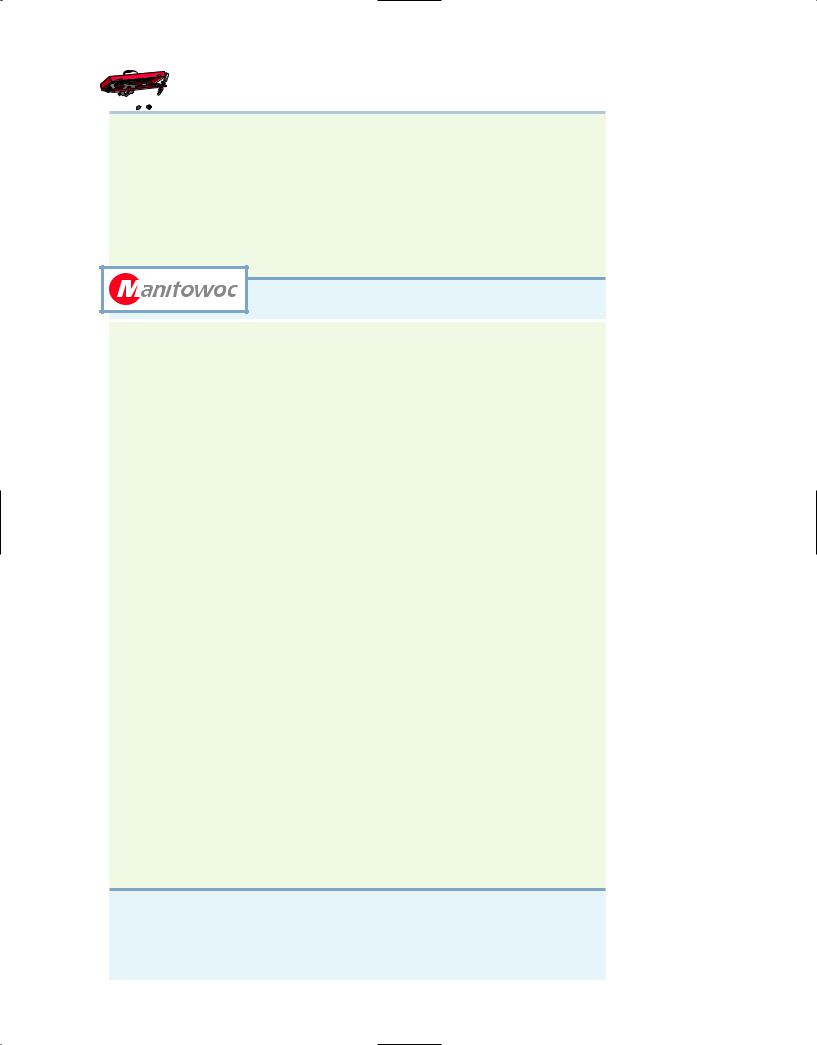
329
Using the Decision Toolkit 301


 USING THE DECISION TOOLKIT
USING THE DECISION TOOLKIT
The Manitowoc Company is located in Manitowoc, Wisconsin. In recent years, it has made a series of strategic acquisitions to grow and enhance its market-leading positions in each of its three business segments. These include: cranes and related products (crawler cranes, tower cranes, and boom trucks); food service equipment (commercial ice-cube machines, ice-beverage dispensers, and commercial refrigeration equipment); and marine operations (shipbuilding and ship-repair services). The company reported inventory of $595.5 million for 2009 and of $925.3 million for 2008. Here is the inventory note taken from the 2009 financial statements.
THE MANITOWOC COMPANY
Notes to the Financial Statements
Inventories: The components of inventories at December 31 are summarized as follows (in millions).
|
2009 |
|
|
|
2008 |
|
Inventories—gross |
|
|
|
|
|
|
Raw materials |
$244.5 |
|
$ |
416.0 |
Work-in-process |
163.5 |
|
|
|
262.9 |
Finished goods |
310.8 |
|
|
|
352.3 |
|
|
|
|
|
|
|
Total |
718.8 |
|
|
|
1,031.2 |
Less: Excess and obsolete inventory reserve |
(90.9) |
|
|
(70.1) |
|
|
|
|
|
|
|
Net inventories at FIFO cost |
627.9 |
|
|
|
961.1 |
Less: Excess of FIFO costs over LIFO value |
(32.4) |
|
|
(35.8) |
|
|
|
|
|
|
|
Inventories—net (as reported on balance sheet) |
$595.5 |
|
$ |
925.3 |
|
|
|
|
|
|
|
|
|
|
|
|
|
|
|
|
|
|
|
|
|
Manitowoc carries inventory at the lower-of-cost-or-market using the first-in, first-out (FIFO) method for approximately 90% of total inventory for 2009 and 2008. The remainder of the inventory is costed using the last-in, first-out (LIFO) method.
Additional facts: |
|
|
2009 |
Current liabilities |
$1,142.2 |
2009 |
Current assets (as reported) |
1,259.9 |
2009 |
Cost of goods sold |
2,958.0 |
Instructions
Answer the following questions.
1.Why does the company report its inventory in three components?
2.Why might the company use two methods (LIFO and FIFO) to account for its inventory?
3.Perform each of the following.
(a)Calculate the inventory turnover ratio and days in inventory using the LIFO inventory.
(b)Calculate the 2009 current ratio using LIFO and the current ratio using FIFO. Discuss the difference.
Solution
1.The Manitowoc Company is a manufacturer, so it purchases raw materials and makes them into finished products. At the end of each period, it has some goods that have been started but are not yet complete (work in process).

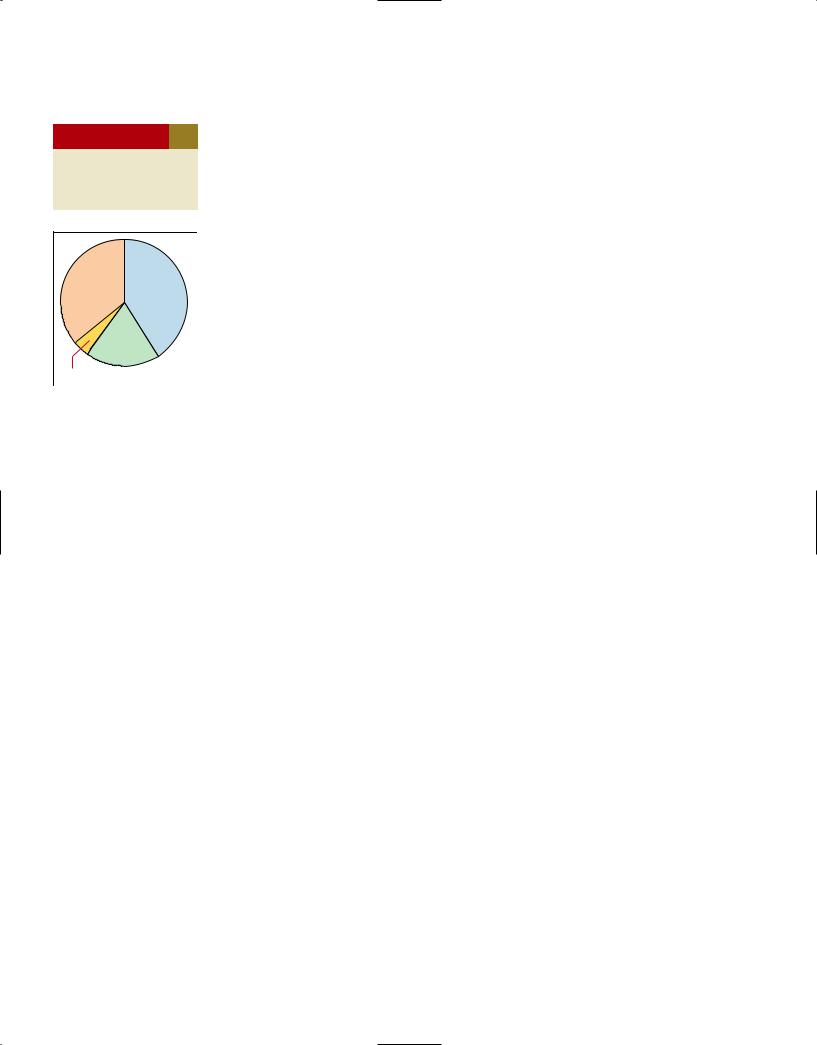

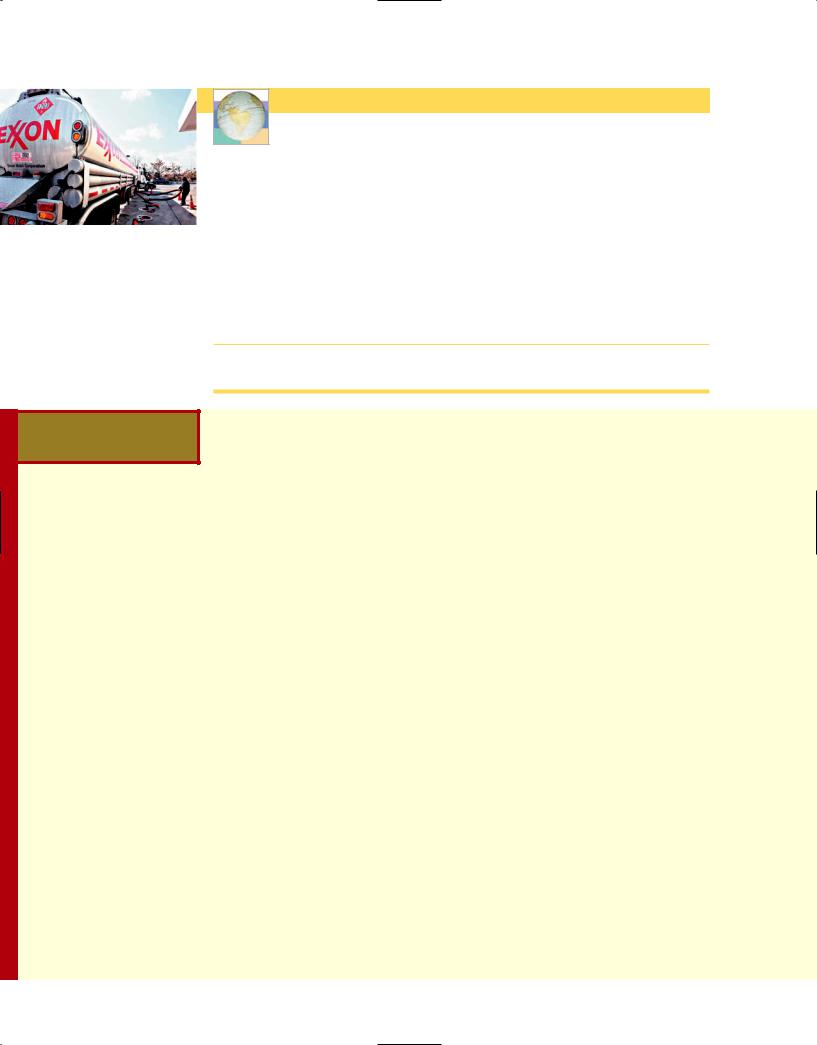
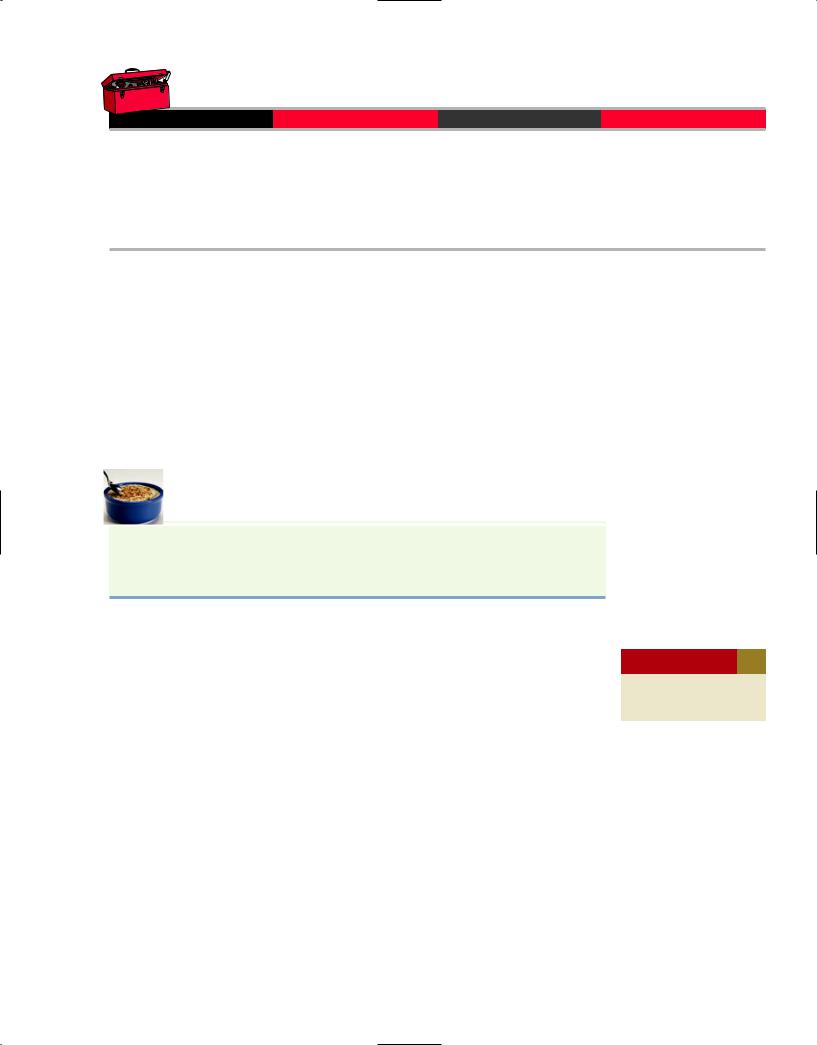
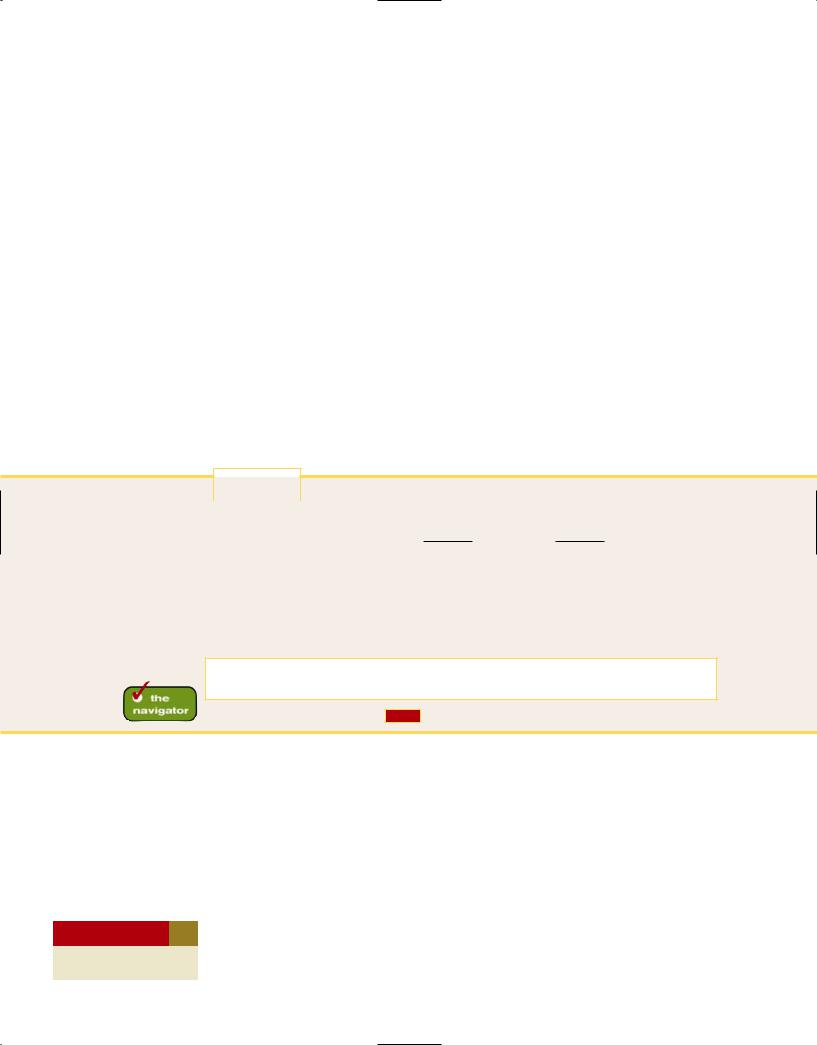

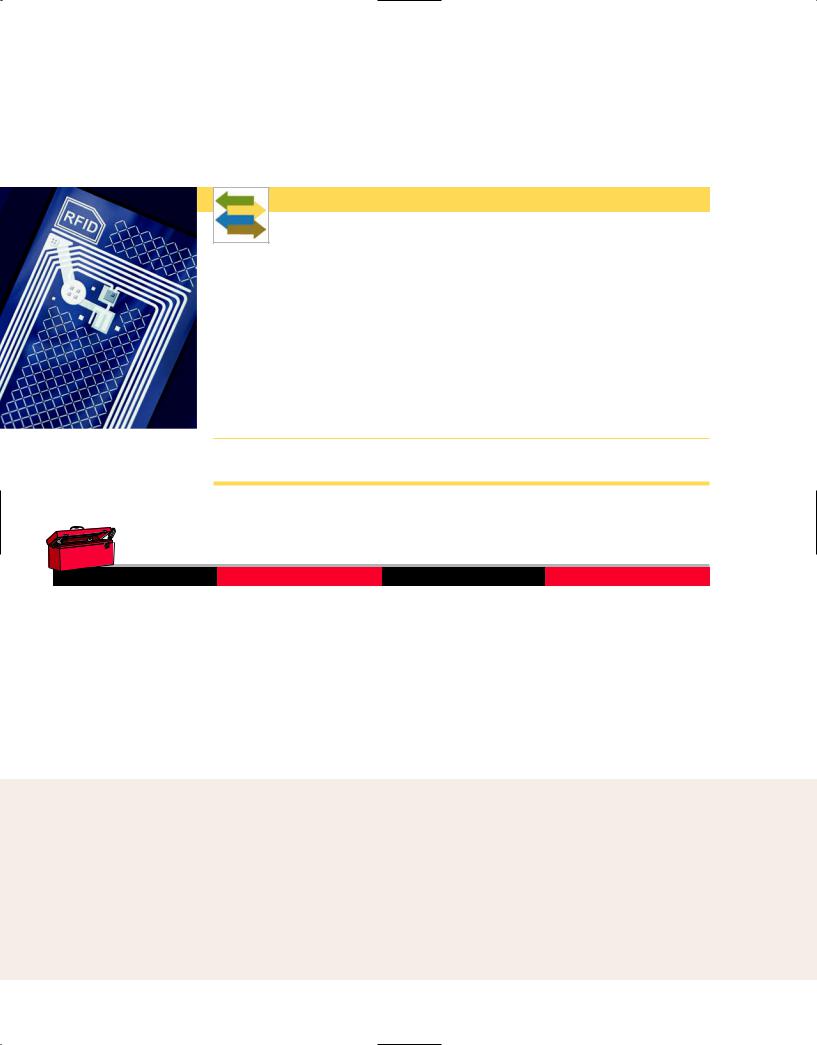


 DECISION TOOLKIT
DECISION TOOLKIT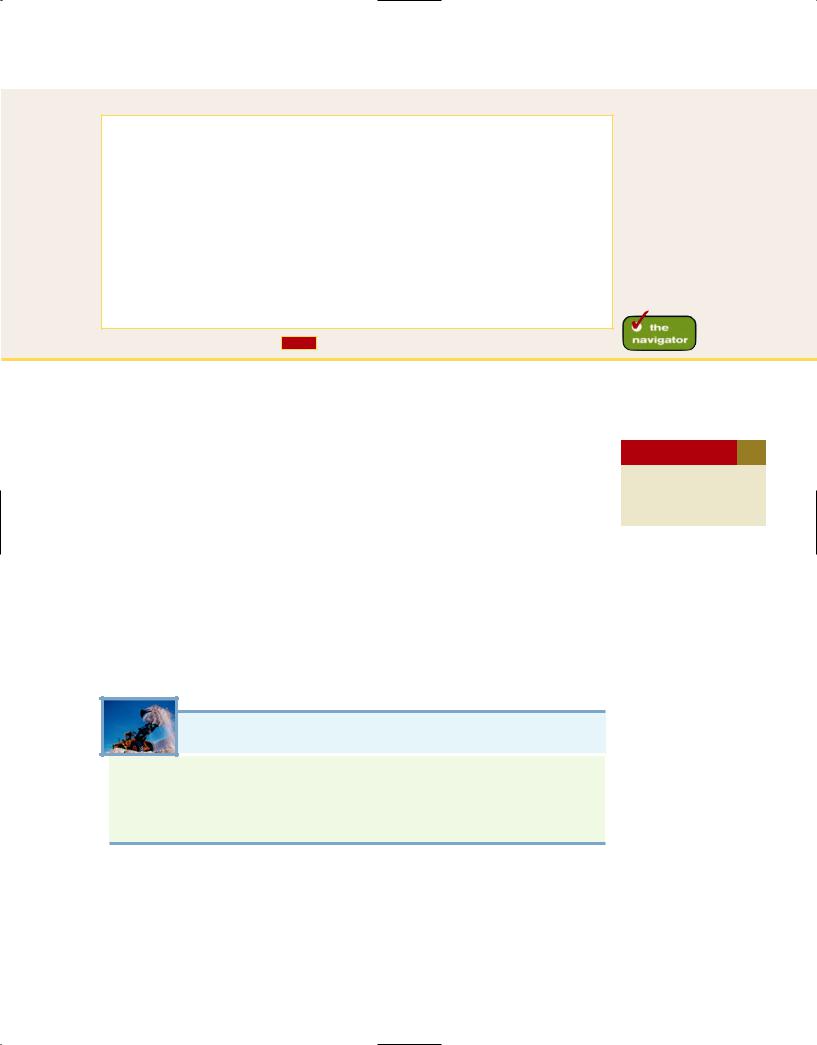



 Average-
Average- Tracy Company sells three different types of home heating stoves (wood, gas, and pellet). The cost and market value of its inventory of stoves are as follows.
Tracy Company sells three different types of home heating stoves (wood, gas, and pellet). The cost and market value of its inventory of stoves are as follows.

 DECISION TOOLKIT
DECISION TOOLKIT

